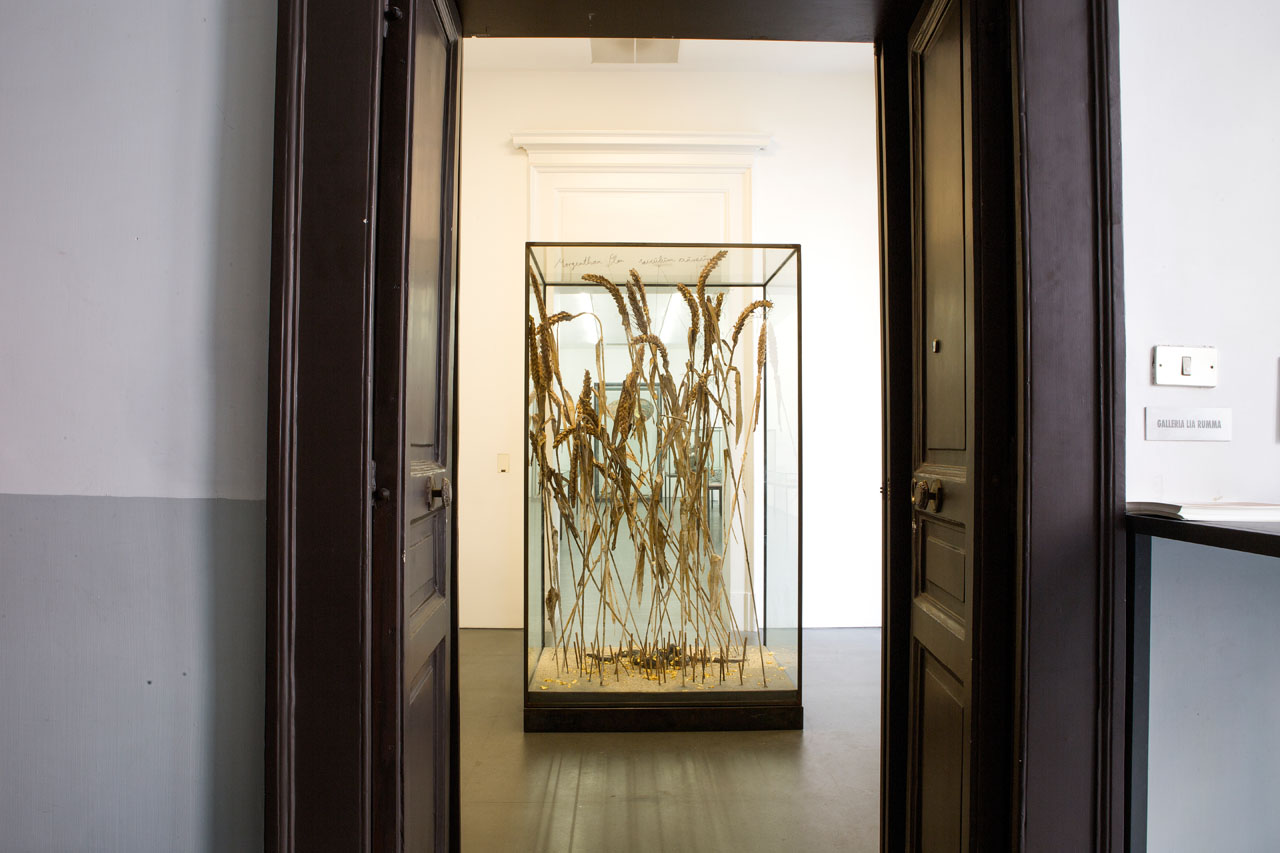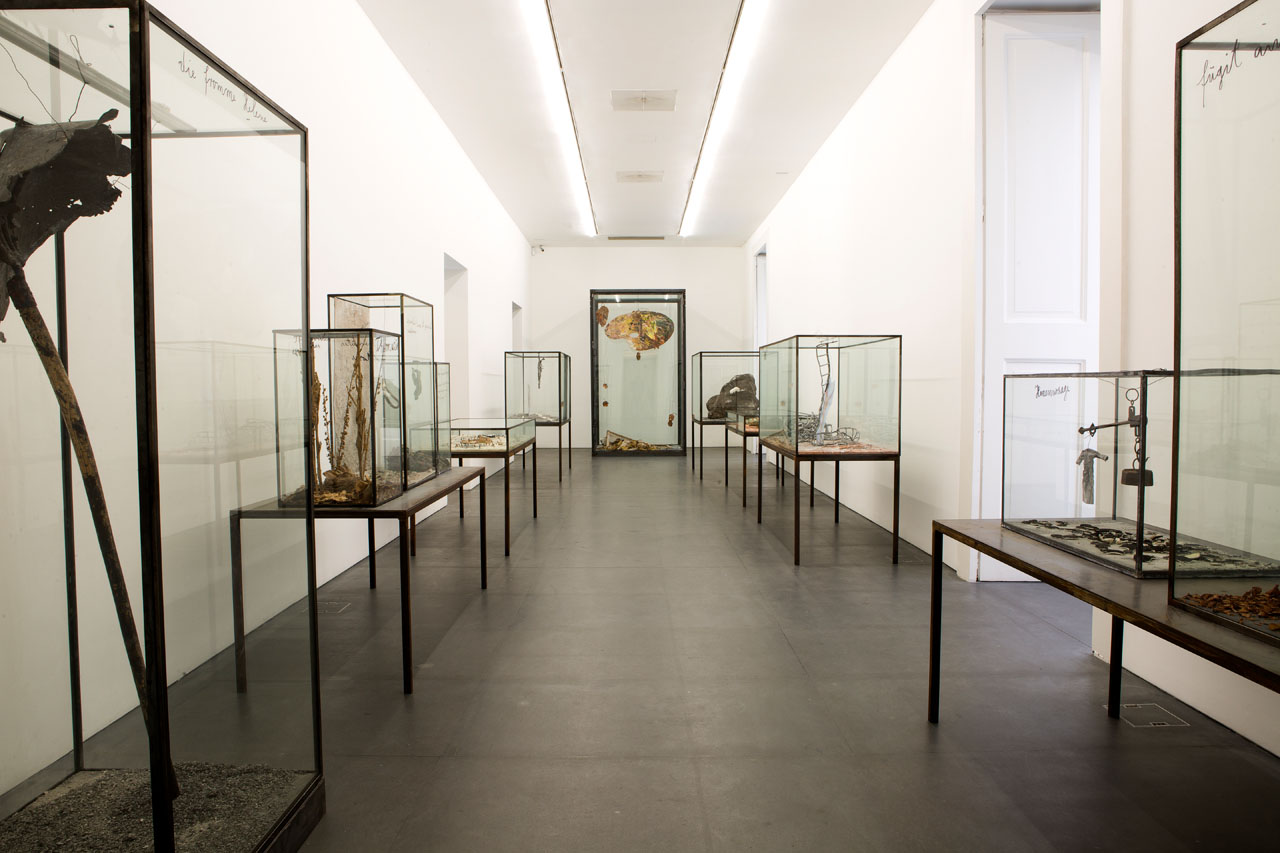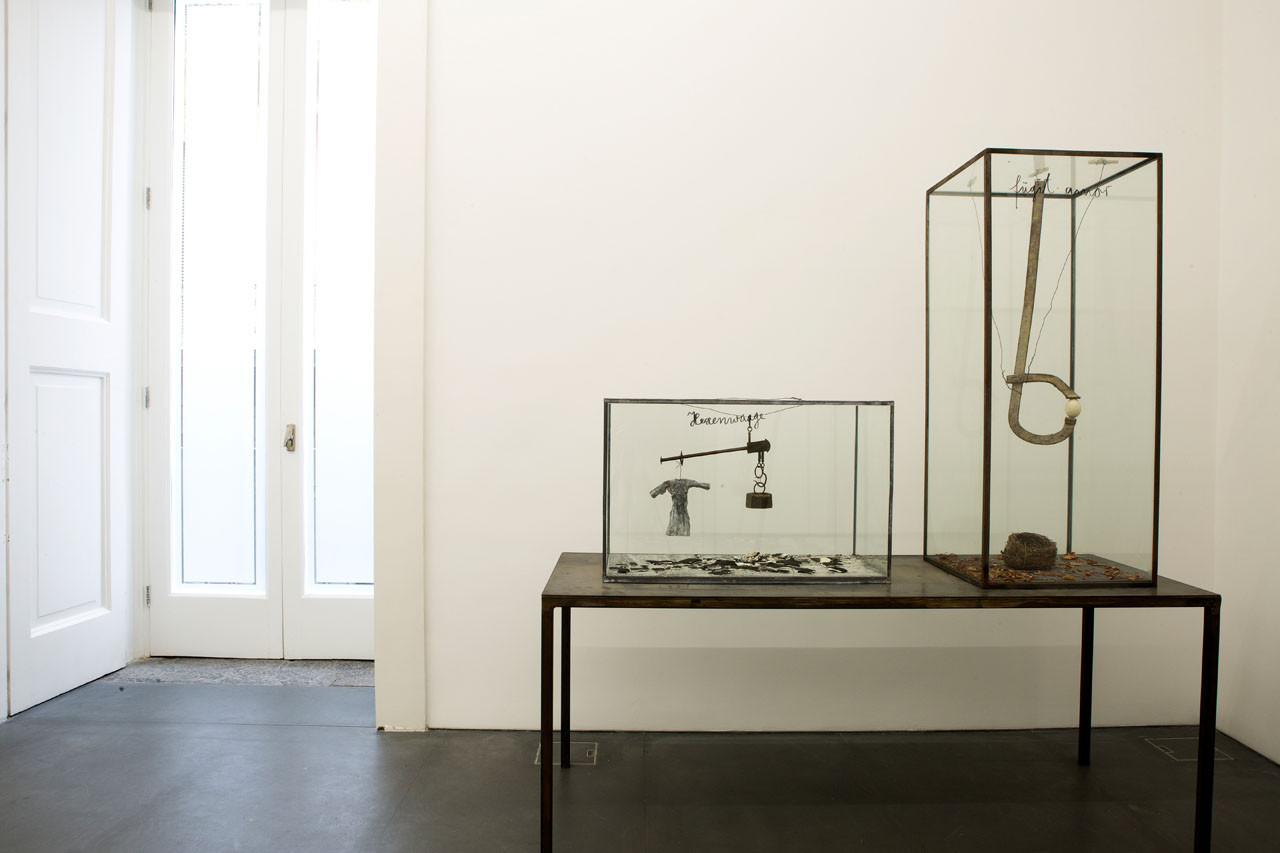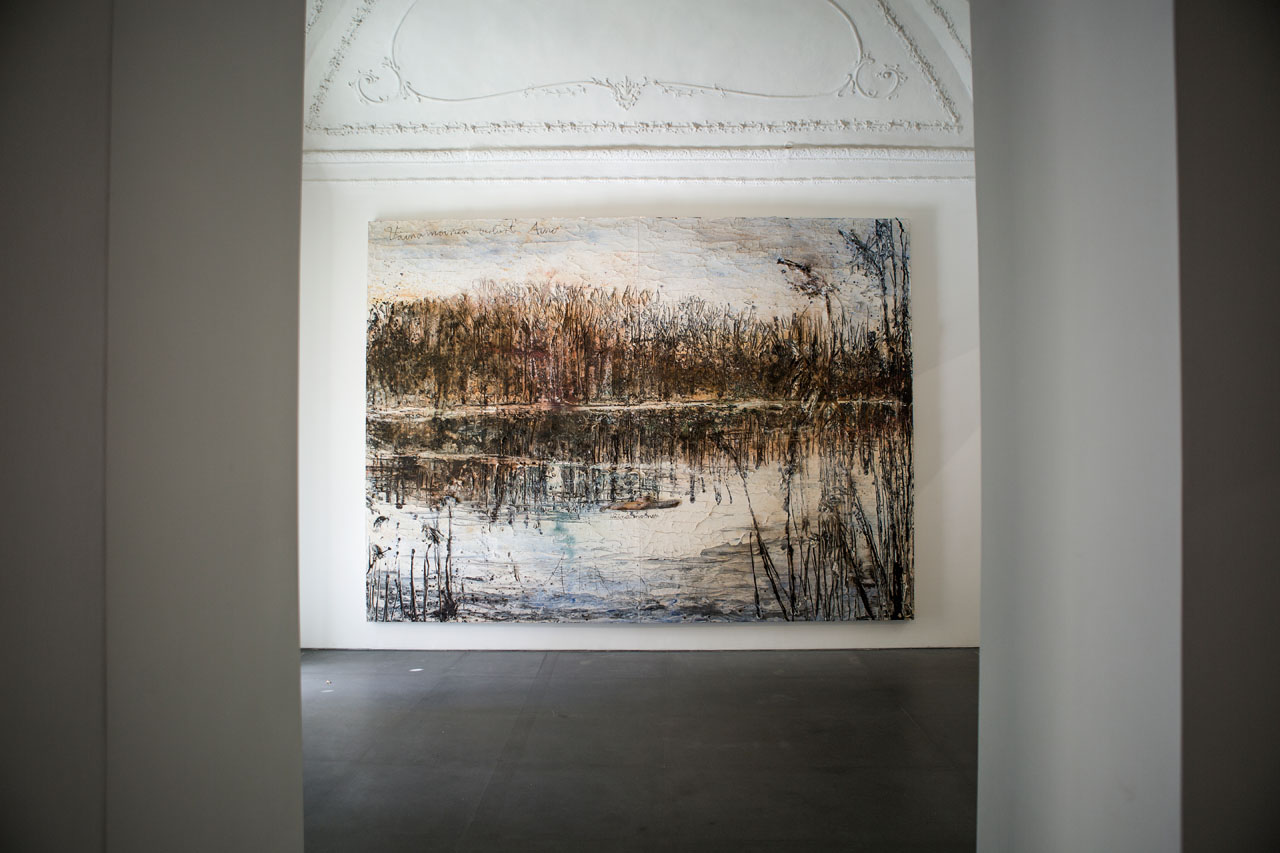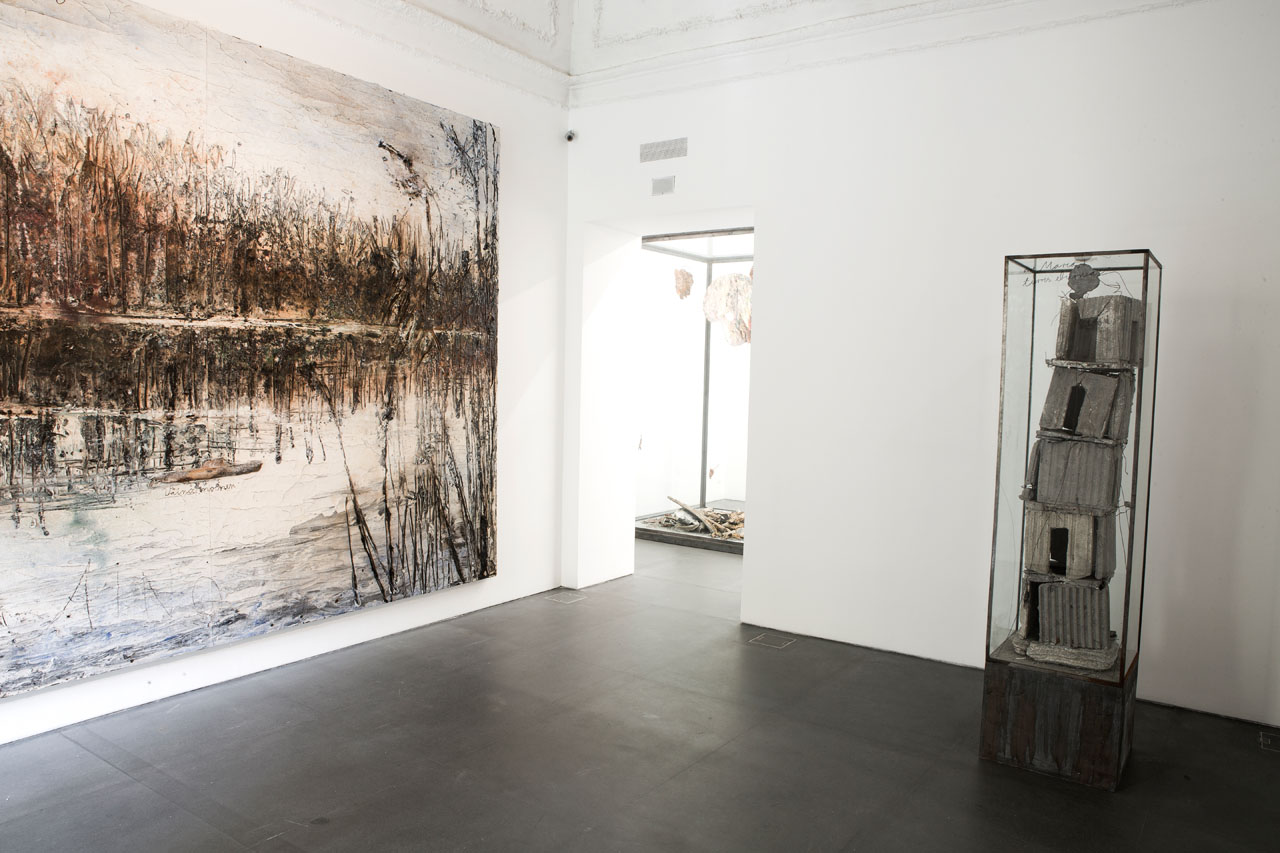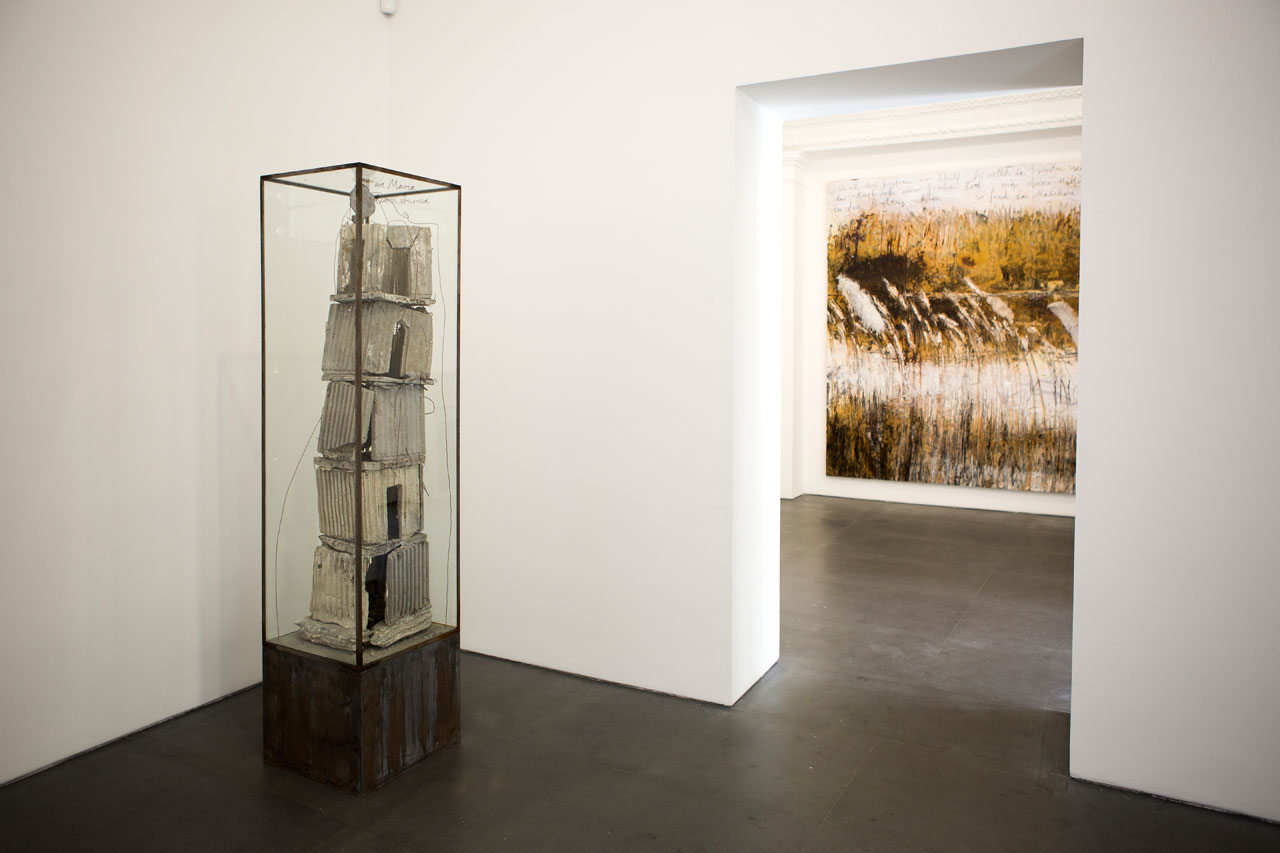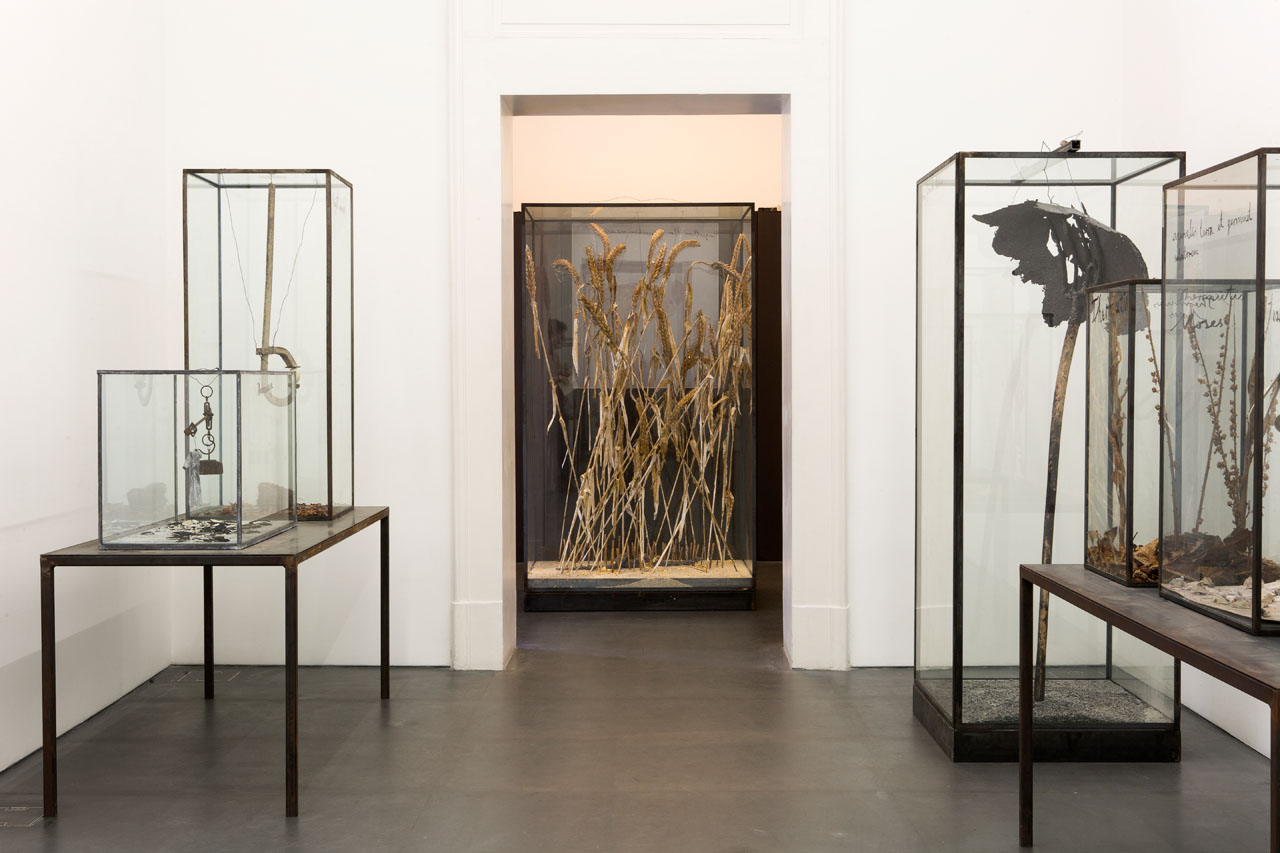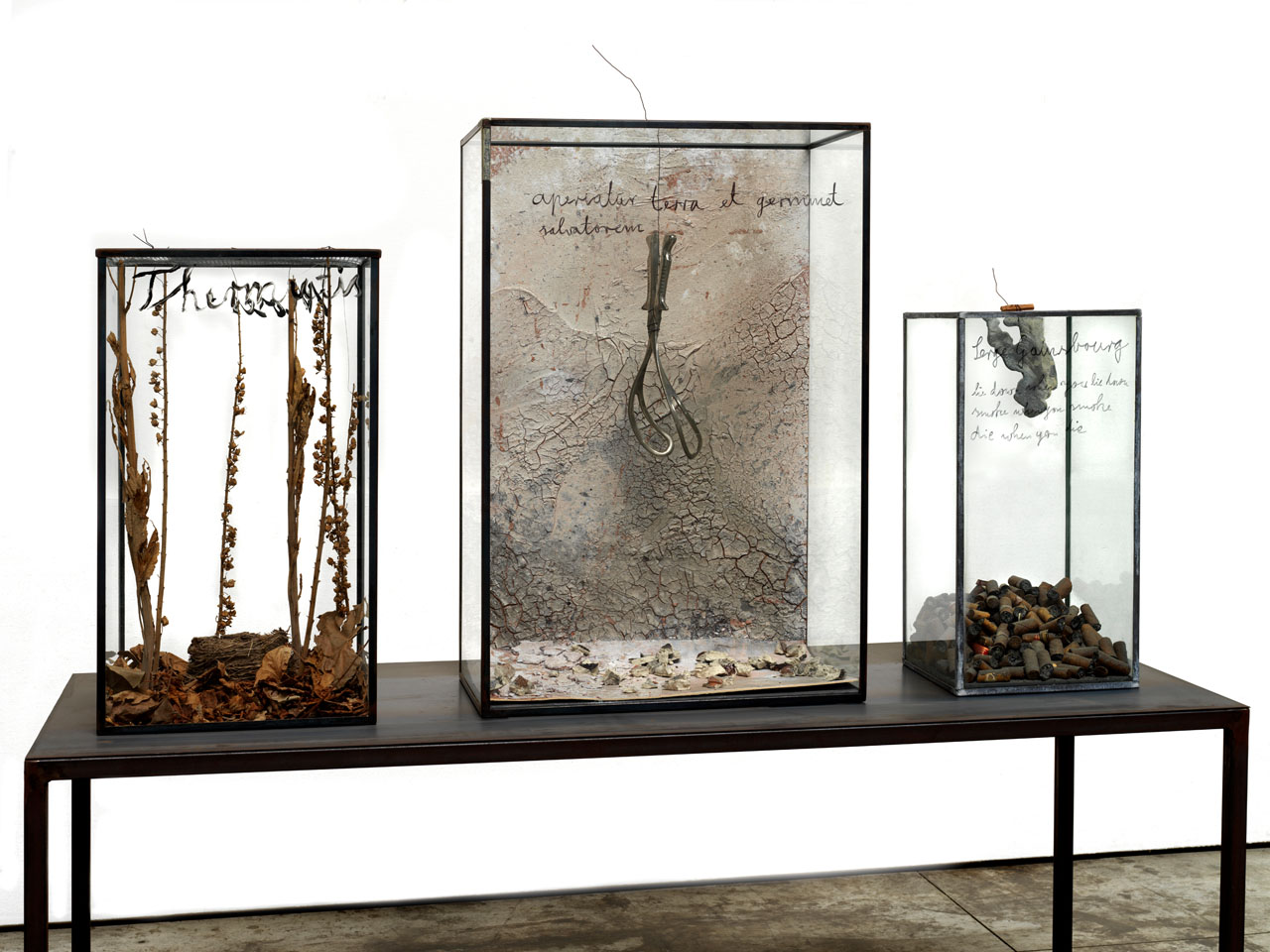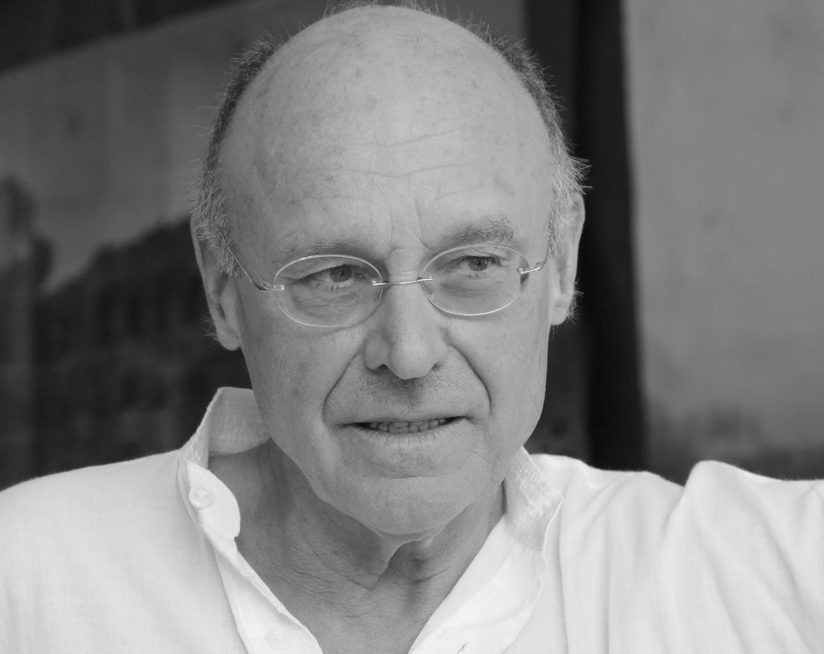On 28 October 2018, Galleria Lia Rumma in Naples presents Fugit Amor, a new solo exhibition by Anselm Kiefer, marking the artist’s return to the city.
Anselm Kiefer’s message to us seems to be that love flees and plays with time and history. At the end of the nineteenth century, Auguste Rodin made many copies of his famous sculpture Fugit Amor – a man embracing a woman, who appear to be drawn along together by an invisible current. The first version was the one destined for an unfinished work, The Gates of Hell. Kiefer has chosen this as a sort of guiding spirit in his new exhibition project designed for the spaces of the Lia Rumma gallery, and it accompanies us through themes and leitmotifs of his work, on a discontinuous chronological journey through a past and a present that are deliberately jumbled together.
Last year, Kiefer entered into one of his original long-distance poetic dialogues with Rodin, exhibiting at the Musée Rodin in Paris, where he declared: “I always feel guilty about painting something reassuring. Great artists are iconoclasts. I know that everything I take on also contains the negation of itself.” The act of creation is an ever-evolving process for the German artist, who works like a prophet-alchemist, never ceasing to seek out new forms to contrast with the old. A forever unfinished process to which he returns, like Rodin to his sculptures. Step by step, from the first stage of decomposition of ignoble matter all the way to the attainment of the philosopher’s stone. And it is from here that we embark on our epistemological journey through the many works dotted around the various rooms of the gallery, filled with history and stories at times forgotten, coming up against the essence of love, which may perhaps be found here and everywhere.
In the large room there are a number of vitrines that, like time capsules, contain organic and other materials, such as ash, iron, lead, leaves, terracotta, flowers, and plants. These are all open to interpretation from the inside outwards. “The glass of the vitrines”, says Kiefer, “is a sort of semi-permeable skin that links art to the outside world in a dialectic relationship.” The artist has imagined a sequence of connections between the objects in the vitrines, which are as though suspended in limbo, midway between what they were and what they will become. Glass boxes tell stories inspired by the Old and New Testament, as in the case of Thermutis – Moses, aperiatur terra et germinet salvatorem. But there are also mysterious renderings of ancient myths. As he has often stated, the artist sees no difference between myth and history. The result is a landscape of poetic ruins that do not entirely reproduce any particular past, but allude to a whole series of pasts – as theorised by Marc Augé, who talks of a pure time without history.
The exhibition ends with two paintings – Aino and Vainamoinen verliert Aino – inspired by the Finnish epic chivalric poem Kalevala, written in 1835 by Elias Lönnrot. The canvases contain passages and names of some of the protagonists (the old vate Väinämöinen and the young Aino) of this national epic which, although centred on the constitutive identity of the Finnish community, embraces universal historical, mythological and religious themes dear to the German artist.
